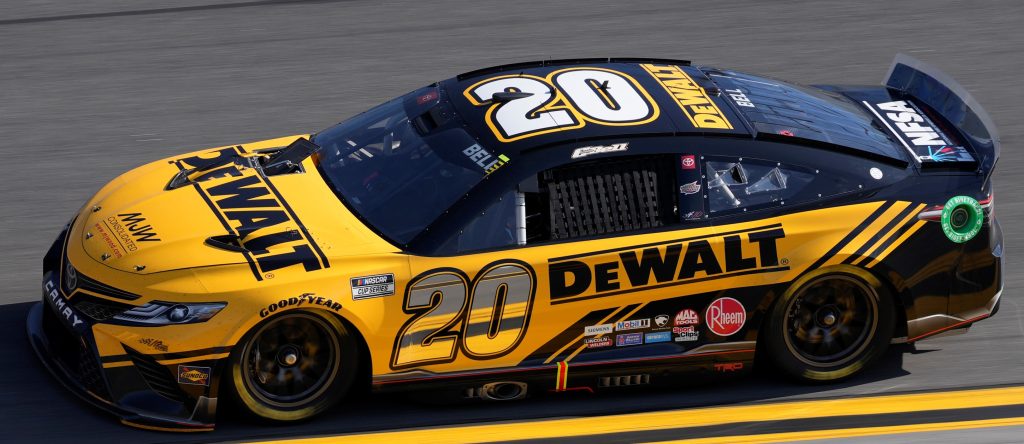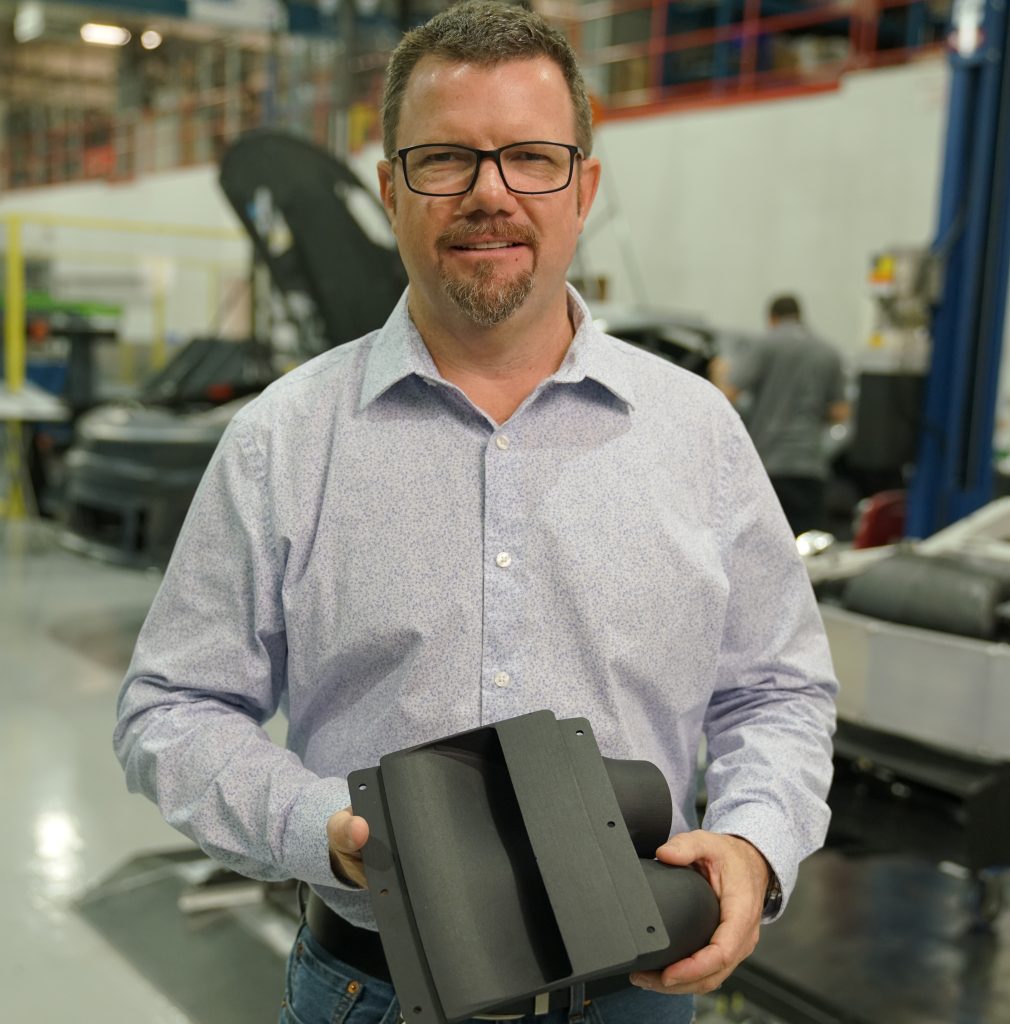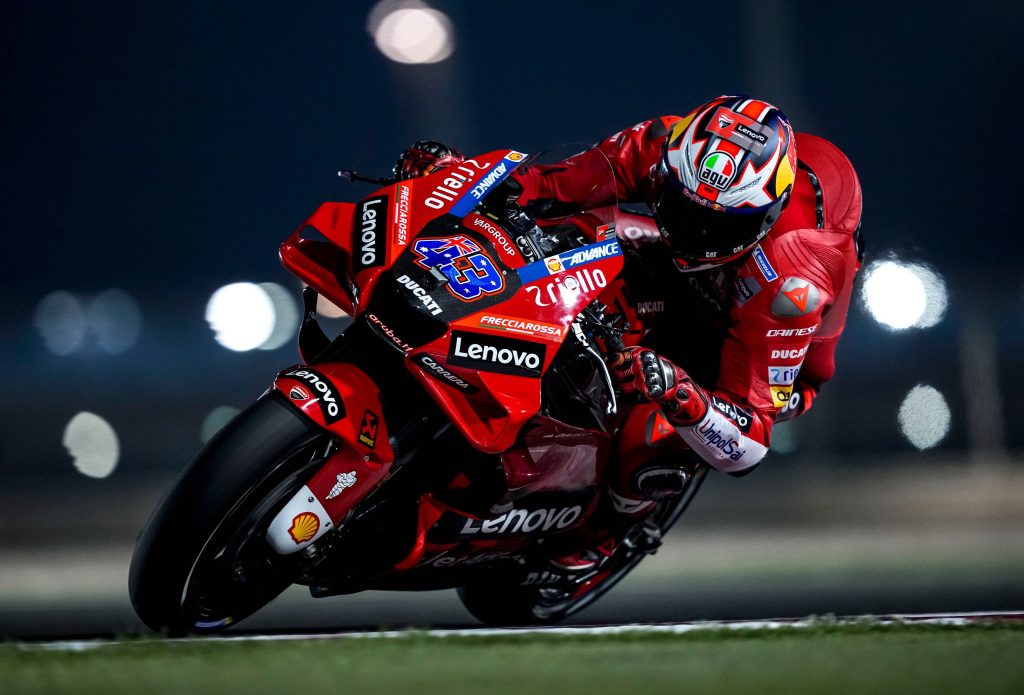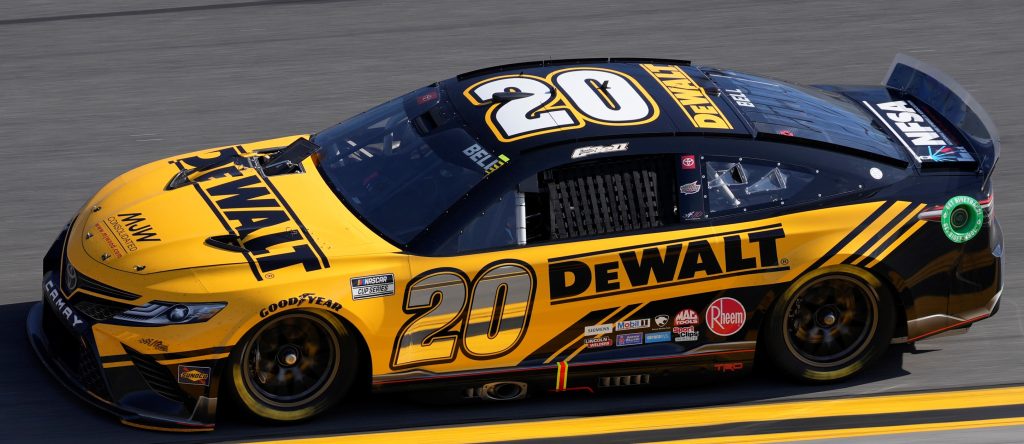3D printer manufacturer Stratasys has brought what it describes as the “first 3D printed production parts” to the NASCAR racing series.
Stratasys may have spent the last 18 years working with teams up and down the NASCAR grid, but having now been made a Competition Partner, it has stepped up its involvement in the sport. Specifically, the firm’s Stratasys Direct arm has begun creating windshield ventilation parts for the series’ Next Gen cars, while NASCAR engineers have also started to 3D print the vehicles’ engine cooling ducts.
“It is exciting to see the evolution of how NASCAR has used additive manufacturing across their vehicles. We’ve helped them move from 3D printed prototypes to end-use production parts,” says Pat Carey, Senior VP of Strategic Growth at Stratasys. “We are honored to be named a NASCAR Competition Partner and to provide all teams with the first end-use production parts for their Next Gen cars.”

NASCAR’s next-generation race cars
Raced annually across the United States, NASCAR is a popular motorsport series with strong roots in abolition-era stock car racing, that has run since 1949. As you’d expect, during the 73 years since, the sport has changed considerably, with its season now a whopping 36 races long, and different formats such as ‘stage racing’ being introduced in 2017 to keep things fresh.
The same can be said of NASCAR vehicles, as while the original ‘Strictly Stock’ series saw entrants like Glenn Dunaway drive a Lincoln owned by bootlegger Hubert Westmoreland, the sport’s latest cars are far more technical, and thanks to their hefty EFI V8 engines, they’re capable of reaching speeds of over 200 mph.
As is the competitive nature of motorsport, NASCAR teams haven’t always been eager to publicize the technologies behind the cars, but many are known to use 3D printing within their operations. CRP USA and DC Electronics have previously utilized the technology to develop NASCAR relay control box electrical enclosures, while Stewart-Haas Racing has 3D printed geometrically-optimized brake pedals.
In NASCAR’s 2022 Cup Series, teams now run the ‘Gen-7’ or ‘Next Gen’ race car, which is designed to deliver downforce, transmission and cost advantages over its predecessor. However, as John Probst, NASCAR’s Senior VP of Racing Innovation explains, the thermal requirements of the advanced parts required to realize these performance benefits, made them a real challenge to build.
“During testing, we realized we needed an additive manufacturing solution that could withstand high temperatures and needed the parts delivered quickly,” explains Probst. “We approached Stratasys Direct, and they delivered not only as a supplier but as a consultant on this project. They provided us with strategic direction on design, materials, and the right additive manufacturing technologies to use to create the highest performance parts for the Next Gen cars.”
“The Next Gen car could not have been completed without the collaboration with NASCAR Competition Partners like Stratasys and Stratasys Direct Manufacturing.”

Stratasys puts the pedal to the metal
Having already worked with NASCAR teams like Joe Gibbs Racing and Penske Racing, Stratasys was clearly an ideal partner to help bring these Next Gen cars to life. What followed was a nearly-three-year R&D project, which culminated in the creation of both 3D printed windshield air cockpit ventilation units and underside NACA ducts, optimized for end-use deployment on this year’s vehicles.
The former were produced from PA11 at Stratasys Direct’s facility in Belton, Texas, using the H350 3D printer Stratasys launched last year, before being finished, dyed and shot-blasted via DyeMansion equipment. By 3D printing the parts, NASCAR engineers are said to have been able to achieve a high level of consistency when it came to quality, in addition to a competitive and predictable cost per part.
In terms of the engine-cooling ducts, these were produced elsewhere, at NASCAR’s R&D facility in North Carolina, leveraging a Fortus 450mc. Together with the 3D printed windshield units, these parts are believed to have provided the Next Gen cars with significant aero performance benefits, and after more than 37,000 miles of road testing, they were deployed on the vehicles’ first run in February this year.
“Having worked with Stratasys for more than 18 years, we’re continually impressed by the quality, speed and flexibility that additive manufacturing offers,” adds Joe Gibbs, Founder and CEO of the Joe Gibbs Racing Team. “Our work together has helped move the racing world forward through new technologies that improve the sport.”

Aiming for pole position with 3D printing
NASCAR is far from the only racing series to have turned to 3D printing in pursuit of performance, and the technology continues to be adopted across the motorsport world. At Ducati Lenovo, the MotoGP team now works with Roboze to 3D print fairing and bike shielding, as part of a new technical partnership between the two.
In the world of Formula 1, additive manufacturing is also deployed extensively up and down the grid, primarily for producing wind tunnel testing components. Speaking to 3D Printing Industry earlier this month, Pat Warner revealed that as much as 70% of the bodywork on Alpine’s F1 car is prototyped via 3D printing, and iterated upon during testing.
As you’d imagine, teams racing in a number of other series also utilize the technology to build their race cars, and in late-2020, it was announced that Chevrolet-printed parts have racked up over 80,000 racing miles. These parts, which include everything from oil tanks to headlight assemblies, have been integrated into the cars of the brand’s Corvette, INDYCAR, NASCAR Camaro and Silverado race teams.
To stay up to date with the latest 3D printing news, don’t forget to subscribe to the 3D Printing Industry newsletter or follow us on Twitter or liking our page on Facebook.
For a deeper dive into additive manufacturing, you can now subscribe to our Youtube channel, featuring discussion, debriefs, and shots of 3D printing in-action.
Are you looking for a job in the additive manufacturing industry? Visit 3D Printing Jobs for a selection of roles in the industry.
Featured image shows Joe Gibbs Racing’s 2022 NASCAR challenger being driven by Christopher Bell with a 3D printed windshield air cockpit ventilation unit. Photo via Stratasys.
